As temperatures rise, so does the risk of heatstroke in our furry companions. Just like humans, dogs are susceptible to heat-related illnesses, with heatstroke being a serious and potentially fatal condition. Understanding the causes, recognizing the symptoms, and knowing how to prevent and treat heatstroke in dogs is crucial for every pet owner.
Contents Overview
What is Heatstroke in Dogs
Heatstroke in dogs is a life-threatening condition characterized by an abnormal increase in body temperature (typically above 103°F or 39.4°C) due to prolonged exposure to high temperatures or strenuous exercise in hot weather. It occurs when a dog’s internal cooling mechanisms, such as panting and sweating through paw pads, become overwhelmed, leading to overheating and potential organ damage. Heatstroke can result in symptoms ranging from heavy panting and excessive drooling to weakness, collapse, and even seizures or unconsciousness if left untreated. Prompt recognition and intervention are essential to prevent serious complications and ensure the dog’s safety and well-being.
Causes of Heatstroke in Dogs
Heatstroke in dogs can happen for several reasons, mainly related to their inability to cool down effectively. Here’s a breakdown of the causes:
- High Temperatures: Dogs have limited sweat glands, primarily located in their paw pads, which makes it challenging for them to regulate body temperature in hot weather.
- Humidity: High humidity levels make it harder for dogs to cool down through panting, as moisture in the air slows down the evaporation process, which is crucial for dissipating heat.
- Confinement: Leaving a dog in a car, especially on a warm day, can lead to rapid overheating, as cars can quickly become like ovens, even with the windows cracked open.
- Intense Exercise: Overexertion, particularly in hot weather, can cause a dog’s body temperature to soar. This is especially true for breeds prone to respiratory issues, such as Bulldogs or Pugs, as they have difficulty breathing efficiently in hot conditions.
- Brachycephalic Breeds: Dogs with short noses, such as Boxers, Boston Terriers, and Shih Tzus, have a harder time panting effectively, making them more susceptible to heatstroke.
- Age and Health Conditions: Elderly dogs, puppies, and those with pre-existing health issues like obesity or heart disease are more vulnerable to heatstroke due to their reduced ability to regulate body temperature.
- Medications: Certain medications, such as diuretics or antihistamines, can affect a dog’s ability to regulate body temperature, increasing the risk of heatstroke.
- Lack of Shade and Water: Dogs left outdoors without access to shade or water on hot days are at higher risk of heatstroke, as they have no means to cool down or stay hydrated.
- Coat Type: Dogs with thick coats or dark fur are more prone to overheating, as their fur insulates them and absorbs more heat from the sun.
- Being Left in Hot Spaces: Leaving a dog in a poorly ventilated room, such as a garage or a backyard without shade, can quickly lead to heatstroke, especially during heatwaves.
Understanding these causes can help pet owners take proactive measures to prevent heatstroke in their dogs and keep them safe during hot weather conditions.
Symptoms of Heatstroke in Dogs
Recognizing the symptoms of heatstroke in dogs is crucial for early intervention and treatment. Here’s a detailed look at the signs to watch for:
- Heavy Panting: Dogs regulate their body temperature through panting. If they’re panting excessively and struggling to catch their breath, it could indicate heatstroke.
- Excessive Drooling: Alongside panting, dogs may drool excessively when they’re overheated as their bodies try to cool down.
- Rapid Heartbeat: An increased heart rate is another common sign of heatstroke in dogs. You may notice their heart beating faster than usual.
- Weakness or Collapse: Heatstroke can cause weakness, lethargy, or even collapse in dogs. They may seem unsteady on their feet or have difficulty standing or walking.
- Vomiting or Diarrhea: Heatstroke can lead to gastrointestinal distress, resulting in vomiting or diarrhea. This is the body’s way of trying to expel toxins and regulate temperature.
- Bright Red or Pale Gums: Changes in gum color can indicate heatstroke. Gums may appear bright red due to increased blood flow, or they may become pale as blood circulation decreases.
- Seizures or Unconsciousness: In severe cases, heatstroke can lead to seizures or loss of consciousness. This is a medical emergency and requires immediate veterinary attention.
- Increased Body Temperature: While checking a dog’s temperature with a rectal thermometer is the most accurate way to confirm heatstroke, it’s essential to remember that any temperature above 103°F (39.4°C) is abnormal and warrants concern. Temperatures above 106°F (41.1°C) are particularly dangerous and may indicate heatstroke.
- Dizziness or Disorientation: Heatstroke can cause dogs to become disoriented, confused, or dizzy. They may seem unaware of their surroundings or unable to respond to commands.
- Excessive Vocalization: Some dogs may whine, bark, or vocalize excessively when experiencing heatstroke, indicating distress or discomfort.
Recognizing these symptoms promptly and taking immediate action can significantly improve the chances of a positive outcome for dogs affected by heatstroke. If you notice any of these signs, it’s crucial to move your dog to a cooler area, offer water, and seek veterinary care immediately.
Prevention Tips
Preventing heatstroke in dogs involves taking proactive measures to keep them cool and comfortable, especially during hot weather. Here are some detailed prevention tips:
- Hydration: Ensure your dog has access to fresh, clean water at all times, both indoors and outdoors. Encourage them to drink regularly, especially during warm weather or after exercise, to prevent dehydration.
- Shade and Ventilation: Provide ample shade and shelter in outdoor areas where your dog spends time, such as a covered patio, shaded tree, or doghouse. Adequate ventilation is essential to allow air circulation and prevent overheating.
- Limit Exercise: Avoid strenuous physical activity during the hottest parts of the day, such as midday when temperatures peak. Instead, schedule walks, playtime, and exercise sessions in the early morning or late evening when it’s cooler.
- Never Leave in Cars: Never leave your dog unattended in a parked car, even for a short period, as temperatures inside a car can escalate rapidly, leading to heatstroke within minutes, even with the windows cracked open.
- Cooling Aids: Utilize cooling aids such as cooling mats, vests, or bandanas to help your dog regulate their body temperature. These products use materials that retain moisture and evaporate slowly, providing a cooling effect when worn or laid upon.
- Avoid Hot Surfaces: Keep your dog off hot surfaces like asphalt, concrete, or sand during hot weather, as these surfaces can quickly heat up and burn their paw pads. Opt for grassy areas or provide protective booties if necessary.
- Know Your Dog’s Limits: Be aware of your dog’s breed, age, health status, and individual susceptibility to heat. Brachycephalic breeds, elderly dogs, puppies, and those with pre-existing health conditions are more prone to heatstroke and may require extra precautions.
- Cooling Techniques: Use cooling methods such as wetting your dog’s fur with cool (not cold) water or using a damp towel to help lower their body temperature. Focus on areas with high blood flow, such as the groin, armpits, and paw pads.
- Monitor Weather Conditions: Stay informed about weather forecasts and heat advisories in your area. Avoid outdoor activities during extreme heatwaves or high humidity levels, as these conditions increase the risk of heatstroke.
- Educate Others: Spread awareness about the dangers of heatstroke and how to prevent it among fellow pet owners, friends, family, and community members. Sharing knowledge and resources can help protect more dogs from heat-related illnesses.
By implementing these prevention tips and staying vigilant, pet owners can help ensure their furry companions stay safe and comfortable during hot weather, reducing the risk of heatstroke and other heat-related complications.
Treatment of Heatstroke in Dogs
Prompt treatment is crucial when dealing with heatstroke in dogs to prevent serious complications or even death. Here’s a detailed guide on how to treat heatstroke in dogs:
- Move to a Cool Area: Immediately move the dog to a shaded or air-conditioned area to lower their body temperature. Avoid direct sunlight and hot environments.
- Assess the Situation: Evaluate the severity of the heatstroke. Check the dog’s vital signs, including their temperature, heart rate, and breathing rate, if possible.
- Cooling Techniques: Use cool (not cold) water to wet the dog’s fur, focusing on areas with high blood flow such as the groin, armpits, and paw pads. You can use a hose, wet towels, or a bathtub to apply water gently.
- Fan or Air Circulation: Use a fan or create airflow to facilitate evaporation and cooling. This helps dissipate heat from the dog’s body more effectively.
- Offer Water: Encourage the dog to drink small amounts of cool water to rehydrate. Do not force them to drink, but make sure water is readily available.
- Monitor Temperature: Continuously monitor the dog’s body temperature using a rectal thermometer. Stop cooling efforts once their temperature reaches around 103°F (39.4°C) to avoid hypothermia.
- Seek Veterinary Care: Even if the dog’s condition seems to improve, it’s essential to seek veterinary attention immediately. Heatstroke can cause internal damage and complications that may not be immediately apparent.
- Transport Safely: If transporting the dog to the veterinarian, ensure proper ventilation and keep them cool during the journey. Avoid confining them in a hot car and provide shade if traveling outdoors.
- Medical Treatment: At the veterinary clinic, the dog may receive further treatment, including intravenous fluids to address dehydration, medications to reduce inflammation and stabilize organ function, and monitoring for any complications such as kidney or liver damage.
- Follow-up Care: Follow any instructions provided by the veterinarian for ongoing care and monitoring at home. Rest and limited activity may be recommended during the recovery period.
- Prevent Recurrence: Take steps to prevent future episodes of heatstroke by implementing preventive measures, such as providing shade, avoiding hot environments, and monitoring the dog’s activity during hot weather.
By following these steps and seeking prompt veterinary care, the chances of a positive outcome for dogs suffering from heatstroke are greatly improved. Remember that heatstroke is a life-threatening emergency that requires immediate attention and should not be taken lightly.
Bottom Line
Heatstroke poses a significant risk to dogs, particularly during hot weather conditions. By understanding the causes, recognizing the symptoms, and implementing preventive measures, pet owners can help keep their furry friends safe and healthy. Prompt action and veterinary care are vital if heatstroke occurs, as early intervention can greatly improve the prognosis. With proper care and attention, we can ensure our canine companions enjoy the summer months safely.




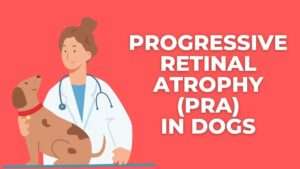












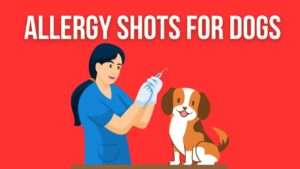


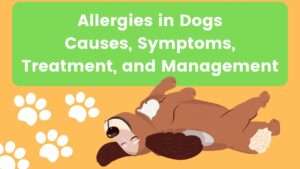



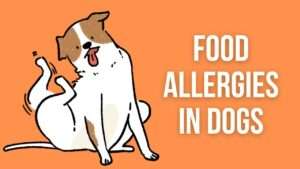
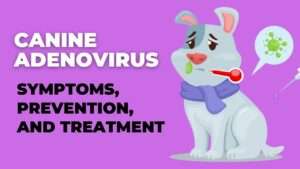









+ There are no comments
Add yours